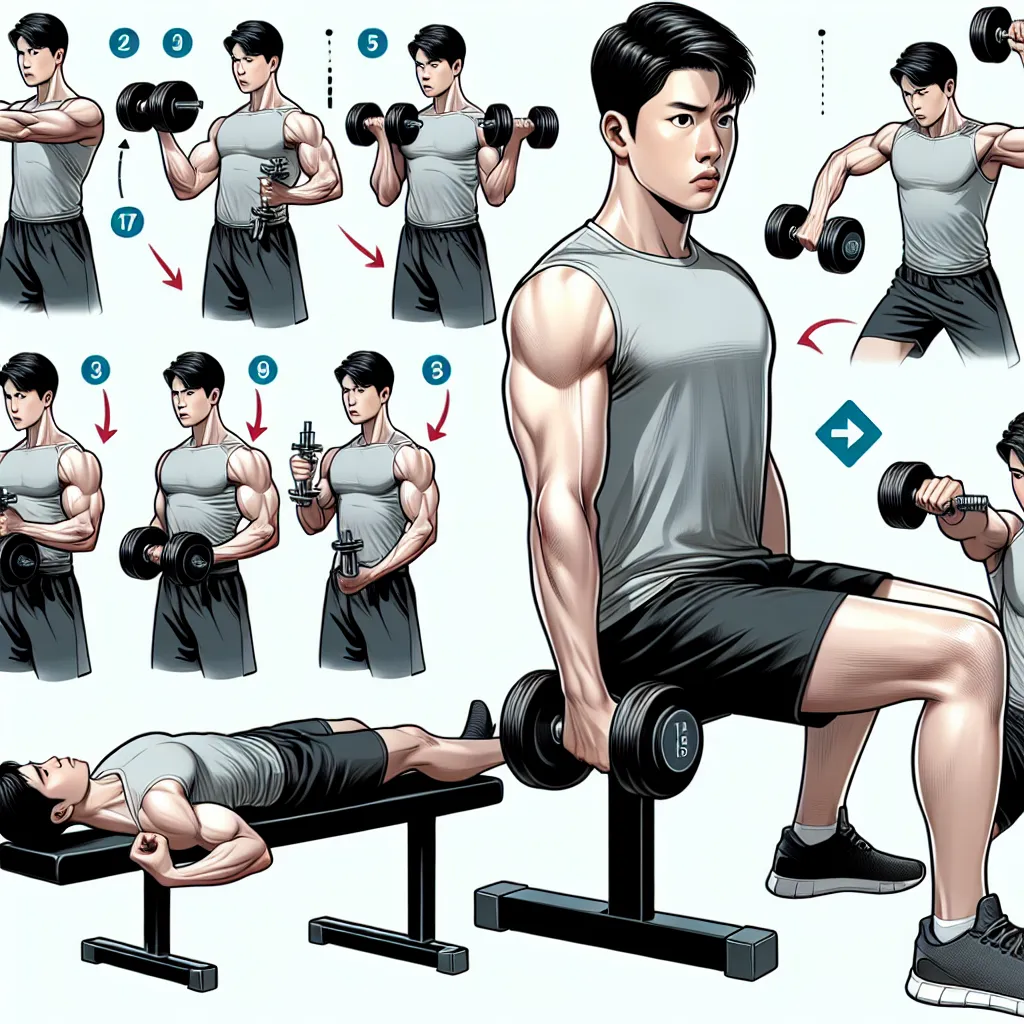
The Benefits of Dumbbell Training
Introduction to Dumbbell Training
Introduction to Dumbbell Training
Dumbbell training is a versatile and effective form of exercise that offers a wide range of benefits for people of all fitness levels. Whether you’re a beginner looking to start a fitness regimen or an experienced athlete aiming to add variety to your workouts, dumbbell training can be a valuable addition to your routine.
One of the key advantages of dumbbell training is its accessibility. Dumbbells are relatively inexpensive and can be used at home, making it easy for individuals to incorporate strength training into their schedules without needing access to a gym. Additionally, dumbbells come in various weights, allowing for progressive overload and the ability to tailor workouts to specific strength levels and goals.
In terms of physical benefits, dumbbell training helps improve muscular strength, endurance, and stability. By engaging multiple muscle groups simultaneously, dumbbell exercises promote functional strength that translates to real-life activities. Furthermore, the free range of motion offered by dumbbells can enhance muscle activation and balance, contributing to overall athleticism and injury prevention.
From a keyword perspective, this content includes important terms such as “dumbbell training,” “strength training,” “muscular strength,” and “progressive overload” to optimize its relevance to the topic. Overall, the introduction to dumbbell training sets the stage for exploring the numerous benefits and techniques associated with this form of exercise.
The Physical Benefits of Dumbbell Workouts
Dumbbell training offers a wide range of physical benefits that make it a fantastic choice for anyone looking to improve their strength, muscle tone, and overall fitness. One of the key advantages of dumbbell workouts is their ability to engage multiple muscle groups simultaneously, leading to better overall functional strength and coordination. By using dumbbells, individuals can work on stabilizing muscles that often go unchallenged when using machines or performing isolated exercises.
Furthermore, dumbbell training allows for a full range of motion, promoting flexibility and joint mobility. This can help reduce the risk of injury and even aid in injury rehabilitation. The versatility of dumbbells also means that they can be used to target specific muscle groups, making them an effective tool for both full-body workouts and targeted strength training.
Another physical benefit of dumbbell training is the potential for improving muscle imbalances. By training each side of the body independently, dumbbells can help correct any strength discrepancies between the left and right sides, leading to more balanced muscle development and reducing the risk of overcompensation injuries.
In addition, the accessibility of dumbbells makes them a convenient option for home workouts or gym sessions. They require minimal space and can be used for a wide variety of exercises, from classic strength moves like bicep curls and shoulder presses to dynamic, full-body movements like dumbbell thrusters and renegade rows.
Overall, the physical benefits of dumbbell training are vast, making it a valuable addition to any fitness routine for those looking to increase their strength, enhance their muscle tone, and improve their overall physical performance.
Mental Health Benefits of Incorporating Dumbbell Training
When it comes to improving mental health, incorporating dumbbell training into your fitness routine can have significant benefits. Regular exercise has long been associated with positive effects on mental well-being, and dumbbell training offers a versatile and accessible way to reap these rewards.
One of the key mental health benefits of incorporating dumbbell training is the release of endorphins, often referred to as the “feel-good” hormones. Engaging in resistance training with dumbbells can stimulate the release of endorphins, leading to a sense of euphoria and general well-being. This natural mood boost can be particularly beneficial for individuals dealing with stress, anxiety, or depression.
Furthermore, dumbbell training offers an opportunity for mindfulness and stress relief. Focusing on proper form and technique during exercises can help individuals to be present in the moment, promoting a meditative state that allows for a break from everyday worries and concerns. Additionally, the physical exertion involved in dumbbell training can serve as a healthy outlet for pent-up emotions and tension.
Consistent dumbbell training also contributes to improved self-esteem and confidence, which are vital components of good mental health. As individuals progress in their strength and fitness levels through regular dumbbell workouts, they may experience a sense of accomplishment and empowerment. This positive impact on self-perception can extend beyond the gym, influencing various aspects of daily life.
In conclusion, the mental health benefits of incorporating dumbbell training into a fitness regimen are substantial. From the release of endorphins to the promotion of mindfulness and self-confidence, regular dumbbell workouts can play a significant role in supporting overall mental well-being.
Tips for Maximizing Your Dumbbell Training Routine
When it comes to strength training, dumbbells are an incredibly versatile and effective tool. Whether you’re a seasoned lifter or just starting out, incorporating dumbbell exercises into your routine can lead to substantial gains in strength, muscle mass, and overall fitness. To help you maximize the benefits of your dumbbell training routine, here are some essential tips to keep in mind:
1. Focus on Form: Proper form is crucial for maximizing the effectiveness of dumbbell exercises and reducing the risk of injury. Take the time to learn the correct technique for each exercise and prioritize maintaining proper form throughout your workouts.
2. Gradually Increase Weight: As your strength improves, gradually increase the amount of weight you lift. Progressing to heavier dumbbells over time will challenge your muscles and stimulate continued growth and development.
3. Incorporate Compound Exercises: Compound exercises, such as dumbbell lunges, chest presses, and rows, engage multiple muscle groups simultaneously, making them highly efficient for building strength and muscle mass.
4. Prioritize Balance and Stability: Utilize unilateral exercises, such as single-arm dumbbell rows or Bulgarian split squats, to improve balance and stability while targeting individual muscle groups.
5. Mix Up Your Routine: Avoid plateaus and keep your workouts engaging by regularly introducing new exercises and varying your training routine. This can prevent boredom and ensure that all muscle groups are effectively targeted.
6. Allow for Adequate Rest: Muscles need time to recover and grow stronger after intense workouts. Be sure to incorporate rest days into your routine to allow for proper recovery.
By following these tips and staying consistent with your dumbbell training routine, you can optimize your workouts and achieve significant improvements in strength, muscle tone, and overall fitness.



